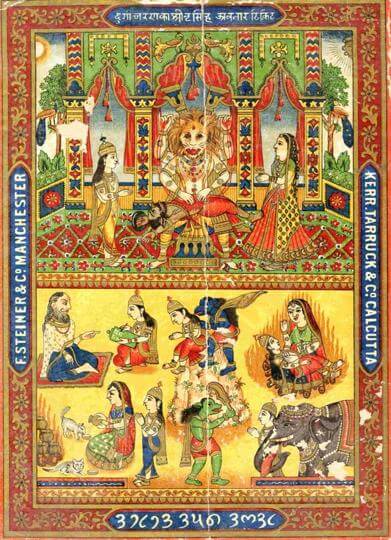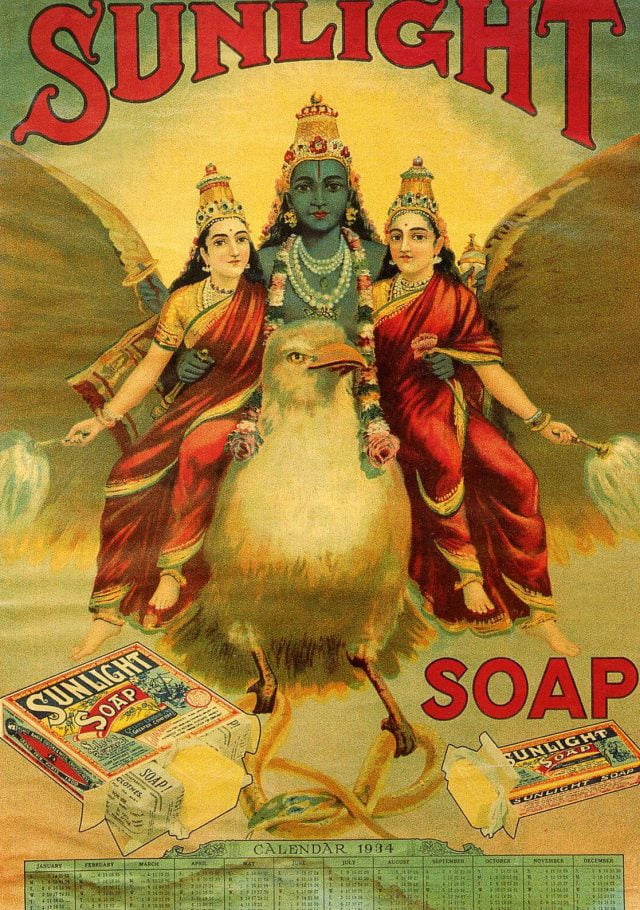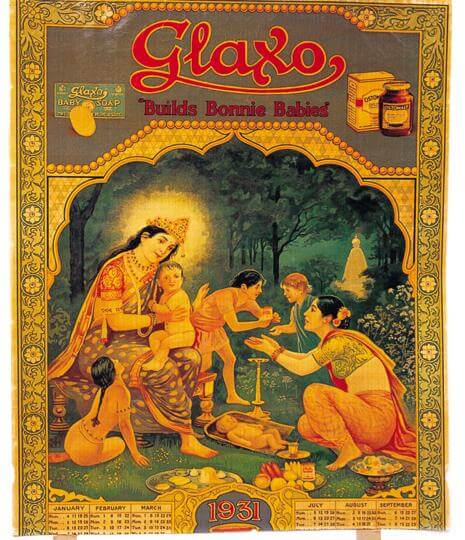Pre-Independence India saw a boom in the advertising of foreign products (mainly from England) on Indian soil. The colonies were seen as potential markets with a high population, but western countries were unsure about how to market products like gripe water and baby formula in India, as they were completely new to the Indian subcontinent.
In order to make the common man connect with these products, the companies capitalised on one of the strongest concepts in India- religion.
Baby Krishna For Baby Products
By using pictures of baby Krishna on baby products, Hindu goddesses on products meant for women and so on these brands immediately caught the eye of the Indian consumer as it made them feel that a picture of a revered god or goddess probably implied reliability of the product as well.
Famous Brands That Used Deities For Marketing
Woodwards, a company that made gripe water for babies suffering from colic, famously used images of baby Krishna dancing triumphantly on the hood of the defeated Kalia, a metaphor for babies overcoming colic and emerging victorious.
F. Steiner & Co- a cloth dyer in Manchester had a tie-up with the Calcutta based Tarruk & Co, and also indulged in the practice of using vibrant images from Hindu mythology on their merchandise- most famously the scene of Hiranyakashipu having his innards ripped out by the Narasimha avatar of Vishnu.
Read More: No, It’s Not Cool To Show Lord Ganesha Eating Lamb In An Advertisement
A Shrewd Tactic
These were stories the local public knew, making the brands instantly relatable.
Another way in which these companies built a name for themselves in India was by distributing company calendars with paintings of Hindu deities to their clients at New Year.
The calendars were cheap and easily available all over the country, and besides being an object of convenience to the user, it provided year-long marketing of the products to the user and his/her household.
Ravi Varma- The Poster Boy Of Religious Art
Using the paintings of Raja Ravi Varma, who was especially famous for his paintings of gods and goddesses from Hindu mythology, these companies tried to sell themselves in their largest colony with a “local image.”
They shrewdly selected the correct avatar of the particular god or goddess to market a particular product. Seeing as how Ravi Varma was not only a figure of national importance thanks to his unique style of art, he also forged common bonds across the various Hindu communities in assigning relatable faces to the deities they revered and making lithographs of his work easily available to the public at affordable prices.
Therefore, it was an extremely clever move on behalf of these companies to pick his artwork to act as their base.
As a result of these marketing tactics, western products caught on quickly among the urban population of pre-Independence India, many of whom (ironically) saw being anglicised as a style statement.
These foreign products found their way into the Indian market, which till then, had largely relied on natural methods for personal care, and goods being specially manufactured en-masse for this purpose was a completely new concept.
These Brands Today
Such was the success of these marketing tactics that the products marketed are available in supermarkets and pharmacies even today, and have become an unquestioned part of many Indian households.
For example, Woodwards has attained status as a brand that mothers swear by for their babies, and have established themselves so deeply that local products in these fields can’t compete with them.
Image Credits: Google Images
Sources: Grace’s Guide, Mid Day, Hindustan Times
Other Recommendations:
Nonsense Celebs Endorse In The Name Of Ads; Now To Be Penalised For Being Misleading
Indian Condom Advertisements Need To Endorse Safe Sex, Not Wild Fantasies






































